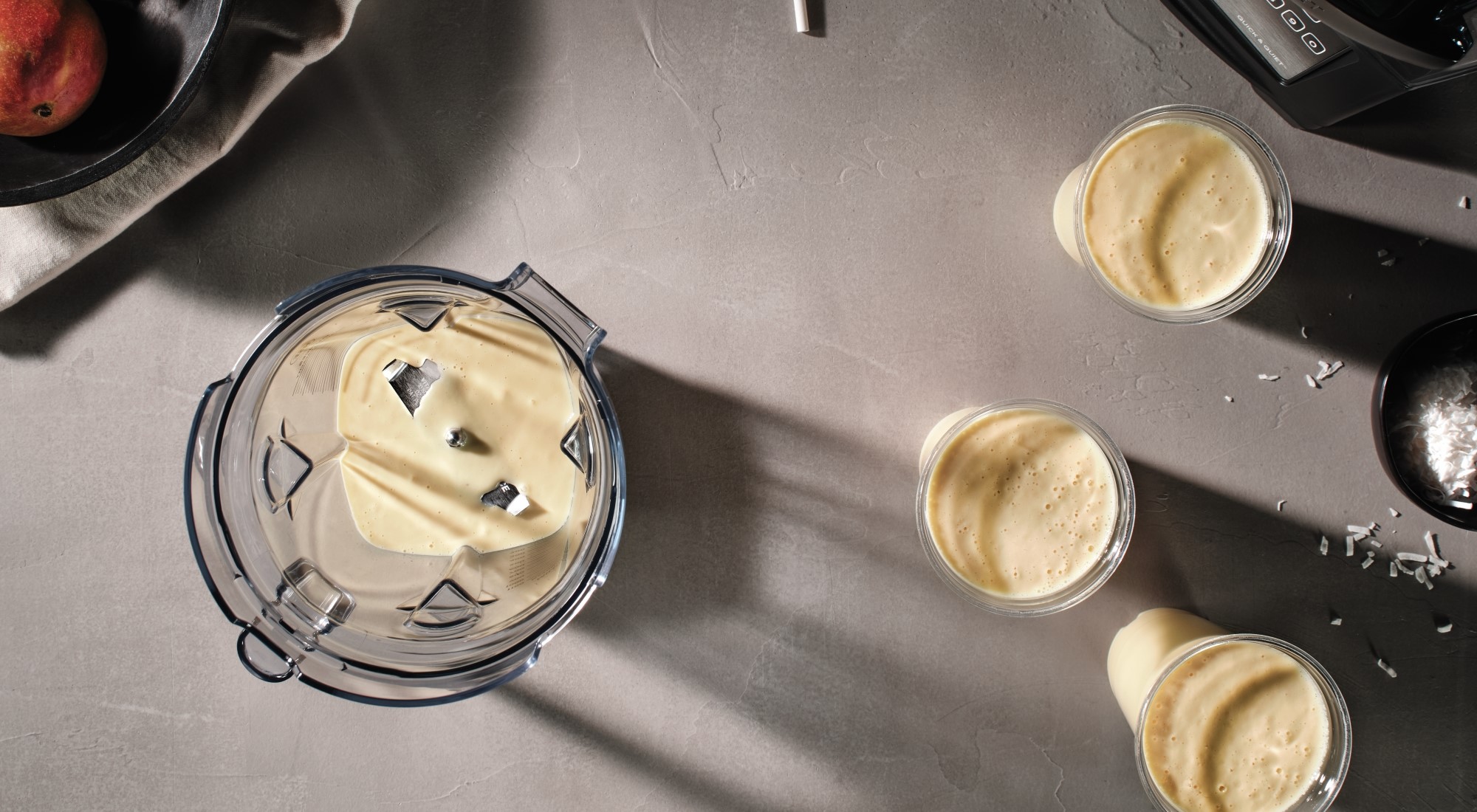Can one blender be faster than another? It can – and quite significantly. The new Quick & Quiet™ by Vitamix® Commercial completes blending cycles for all types of recipes in 30% less time than The Quiet One®, our own best-in-class beverage blender.
But that’s not the whole story. To get a full picture of how much faster one blender is than another, you need to look at all the things that contribute to being “faster” – not just blending time – such as ease of use, programming, reliability, and durability.
First, though, let’s look at blending times.
Faster Blend Times – Let’s Compare
The Quick & Quiet was developed in response to a rapidly developing market demand for faster, more robust blending. A major, two- to three-year initiative at Vitamix Commercial yielded an entirely new blending platform with several innovations, like a more powerful motor and a second set of blades, which doubles the cutting-edge surface.

Let’s compare the new Quick & Quiet to The Quiet One, our own best-in-class commercial beverage blender first introduced in 2009. Measured in seconds, how much faster is the Quick & Quiet at processing a basic smoothie. We’ll use the general-purpose/smoothie program on both machines to make the comparison.
- The Quiet One Program #1 – 18 seconds
- Quick & Quiet Program #1 – 12 seconds
In other words, Quick & Quiet accomplishes the same result with a 33% improvement in speed. This comparison is just for demonstration purposes. Each restaurant has its own smoothie recipes that may require more or less time, and both Vitamix Commercial machines come with a wide variety of programs so you can dial in the recipe performance.
The same difference in blend times holds true for many other factory-set programs for the two Vitamix Commercial machines:
| The Quiet One | Quick & Quiet |
|---|---|---|
Small Frozen Coffee | 14 seconds | 8 seconds |
Frozen Juice | 18 seconds | 12 seconds |
Ice Cream Drinks | 28 seconds | 18 seconds |
These examples show a 33% to 42% increase in speed (or between 6 and 10 seconds), a valuable gain for any restaurant trying to shave time from order prep.
Lastly, let’s consider that many frozen blended beverages have become thicker and/or harder to blend in recent years. There are many reasons for this – lower sugar, powder additives, more frozen elements (from ice to hard ice cream), lower liquid volumes – but they all add up to the same thing: tougher work for the blender.
Many blenders struggle with these hard-to-blend recipes. Both The Quiet One and the Quick & Quiet can handle them, but the Quick & Quiet was designed with this trend in mind, ensuring it could process extra-thick recipes quickly and with a consistent texture throughout. Let’s compare the factory-set programs for this category of beverage:
- The Quiet One Program #17 – 30 seconds
- The Quick & Quiet Program #6 – 21 seconds
Again, the improvement is dramatic: a 30% improvement in cycle time or a savings of 9 seconds. Ask yourself: What is a second worth to your food service business?
Press a Button, Start the Blender
While blend time is important, you have to see the blender in a real restaurant setting to grasp its full impact on speed of service. Ease of use matters a lot. Both The Quiet One and the Quick & Quiet were designed so that anyone operating the machine – a new employee or trained veteran – will produce the same quick and consistent result.
In the quick-service business, blending usually occurs in a fast-paced, noisy environment. You do not want employees to have to look up or punch in codes – or operate a blender manually.
These steps are not necessary with The Quick & Quiet. It comes with 40 factory programs. Any 10 of these can be pulled down and assigned to the program buttons on the front of the machine. These factory-set programs are optimized and highly versatile, so one program button can be used to blend many different recipes.
When it comes time to run the blender, just touch one button on the front of the machine and the program runs, no extra steps needed.
Most Importantly – No Interrupted Flow
In comparing blender speed, one variable is often overlooked: Reliability.
If a blender goes down, none of its other virtues matter. In the present moment, you are unable to serve customers or make money. Why does this happen and how can you prevent it? It often comes down to component quality and a balanced design (i.e., no one component is overpowering the others).

The Quick & Quiet is a feat of harmonious design, with each newly designed component of the machine calibrated to support every other. With an efficient motor and extra cooling capacity, as well as high-quality, metal components in the drivetrain, the Quiet & Quiet is designed for heavy use and long service in commercial food service.
To aid with regular maintenance, the Quick & Quiet is equipped with near-field communications (NFC). And, it comes with an industry-leading warranty, covering the motor for 700 hours or four years (whichever comes first) and the Accelerate™ Container for 120 hours or one year.
Real Differences Beneath the Surface
Speed of service is challenging, but sometimes there are easy seconds to be saved if we know where to look.
Blenders may look similar from the outside, but their performance is vastly different. Some blenders are much faster – many seconds faster – as we have just seen by comparing two high- performing machines.
In addition, some machines are easier to operate, ensuring that anyone – new or experienced staff – can operate them and still save time.
Blending cycle times are important, but so is the full package – an optimum design with a powerful motor, innovative blade design, and aggressive container, all working in concert to ensure fast operation and reliable, long-lasting service.



